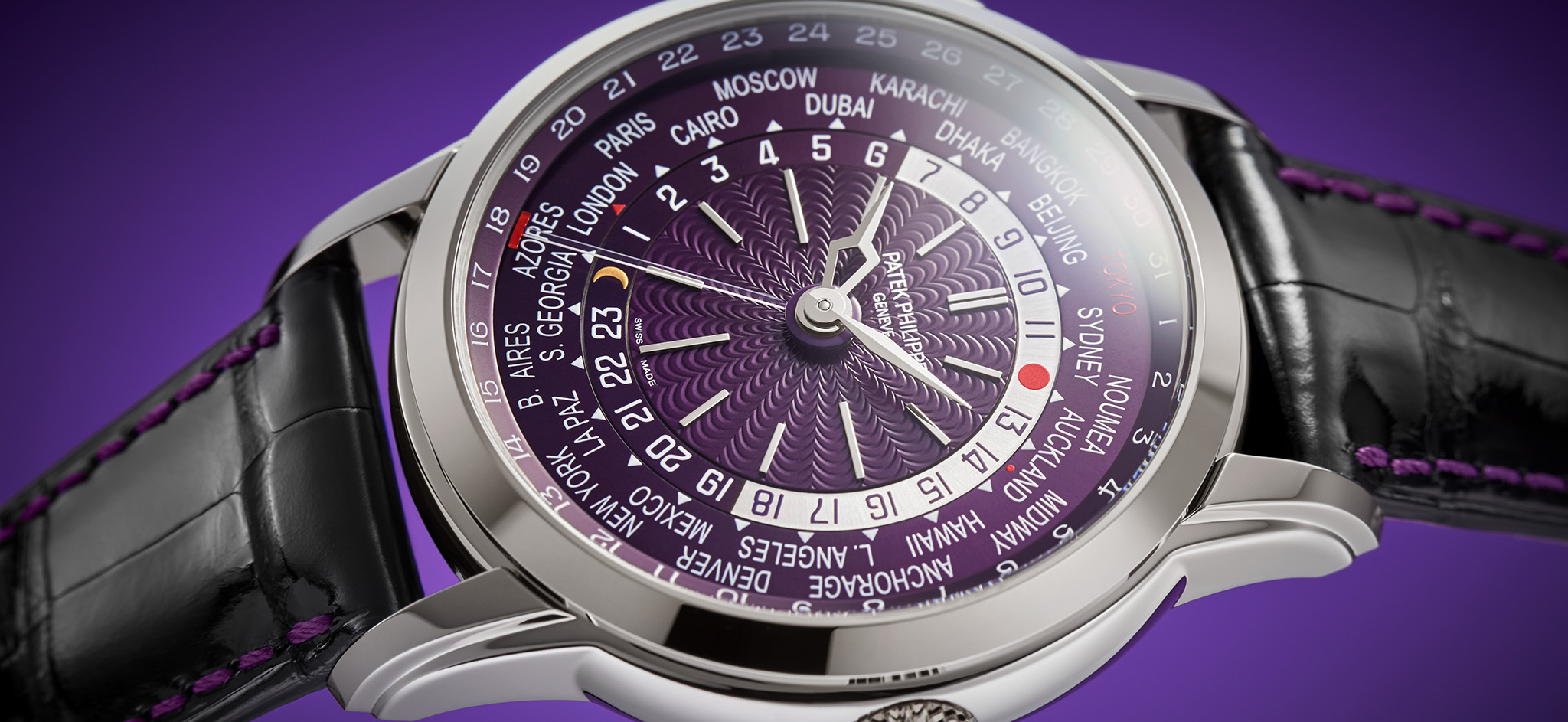Reference
Why Patek Philippe Remains Still and Forever the King of High Watchmaking
Reference
Why Patek Philippe Remains Still and Forever the King of High Watchmaking
Which is not meant to be so much glib as factual. As a wholly family-owned and -run company, Thierry and Philippe Stern can decide how to deploy their capital. For them, the objective has never been to sell more watches, but to tell the world their story with the greatest authenticity. Because when it comes to high watchmaking, the innovation of game-changing complications and the creation of peerless métiers d’art, there is only one king. And that king is Patek Philippe.
Even industry legend Jean-Claude Biver — a man who has, in some ways, competed against Patek Philippe for over 40 years since he revived Blancpain in 1982 — collects almost exclusively Patek Philippe watches himself. Why? He explains, “Because Patek is the best. It is as simple as that. No brand has brought greater creativity, better quality and more beautiful designs to watchmaking. No one.”
Today, all watch brands are engaged on a single-minded mission to create broader awareness, greater desirability and to reach the next generation of consumers. But each one at the top does it in a different way. Audemars Piguet has decided to engage with popular culture like hip hop and Marvel Comics. Rolex today completely dominates the world of sports, despite it very brilliantly shifting beyond the sports market and into the high-luxury world with its watches.
But no one tells the story of the history of watchmaking better than Patek Philippe. And when you attend the Grand Exhibition in Tokyo’s Sumitomo Sankaku Hiroba as a new watch fan, a young person still in his early formative stage in terms of taste, there is one message you will leave with — the one irrefutable and unassailable truth that will be imparted upon you so that it bonds forever with your psyche — which is that the history of high watchmaking is the story of Patek Philippe itself, certainly throughout the 20th century and now in our new millennium.

Patek Philippe’s Watch Art Grand Exhibition in Tokyo’s Sumitomo Sankaku Hiroba
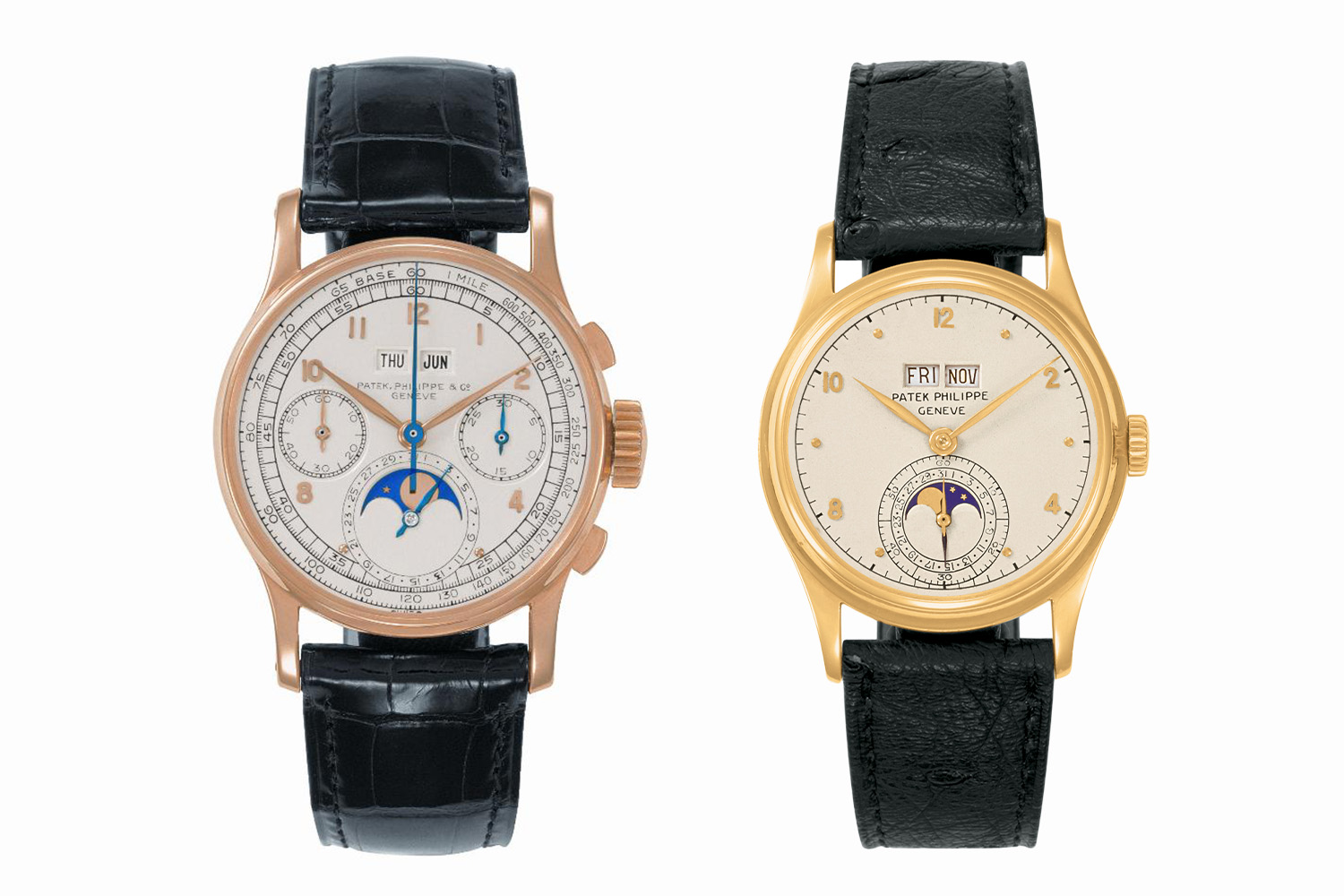
From left: Patek Philippe Ref. 1518 and Ref. 1526
The iconic Patek Philippe Ref. 3448
Ahmed Shary Rahman, modern Patek Philippe collector and GPHG jury member, says, “More than shaping the history of high watchmaking. Patek is high watchmaking. And what I love is that when they launch new watches, it’s never a gimmick; it’s never to create a social media sensation, but to introduce new functional complications backed by a tremendous amount of research and new functional innovations.” The message is clear: amid a world where watch brands are launching a constant dizzying array of newer, better, splashier, crazier timepieces, Patek Philippe makes real watches. What do I mean by this? Let’s take a look at two timepieces introduced during the Tokyo Grand Exhibition as examples of real watchmaking.
Quadruple Complication Limited Edition Tokyo 2023 Ref. 5308P-010

Patek Philippe Quadruple Complication Ref. 5308P-010 Limited Edition Tokyo 2023
What was super amusing at the Tokyo Grand Exhibition was that the Ref. 5308, by all standards an utterly mind-blowing game-changing timepiece, was simply put on display in a vitrine in the Grand Complication room with a small plaque that read “New Model”. But it was when you read “Split Second Chronograph” in the watch’s description that things got exciting. There is no brand more famous for the split-seconds chronograph or “rattrapante” than Patek Philippe. As proof of this, they even brought the legendary “Duke Ellington” Ref. 1563, a simply incredible split-seconds chronograph version of the famous Ref. 1463 Tasti Tondi, with them to the Tokyo Exhibition.
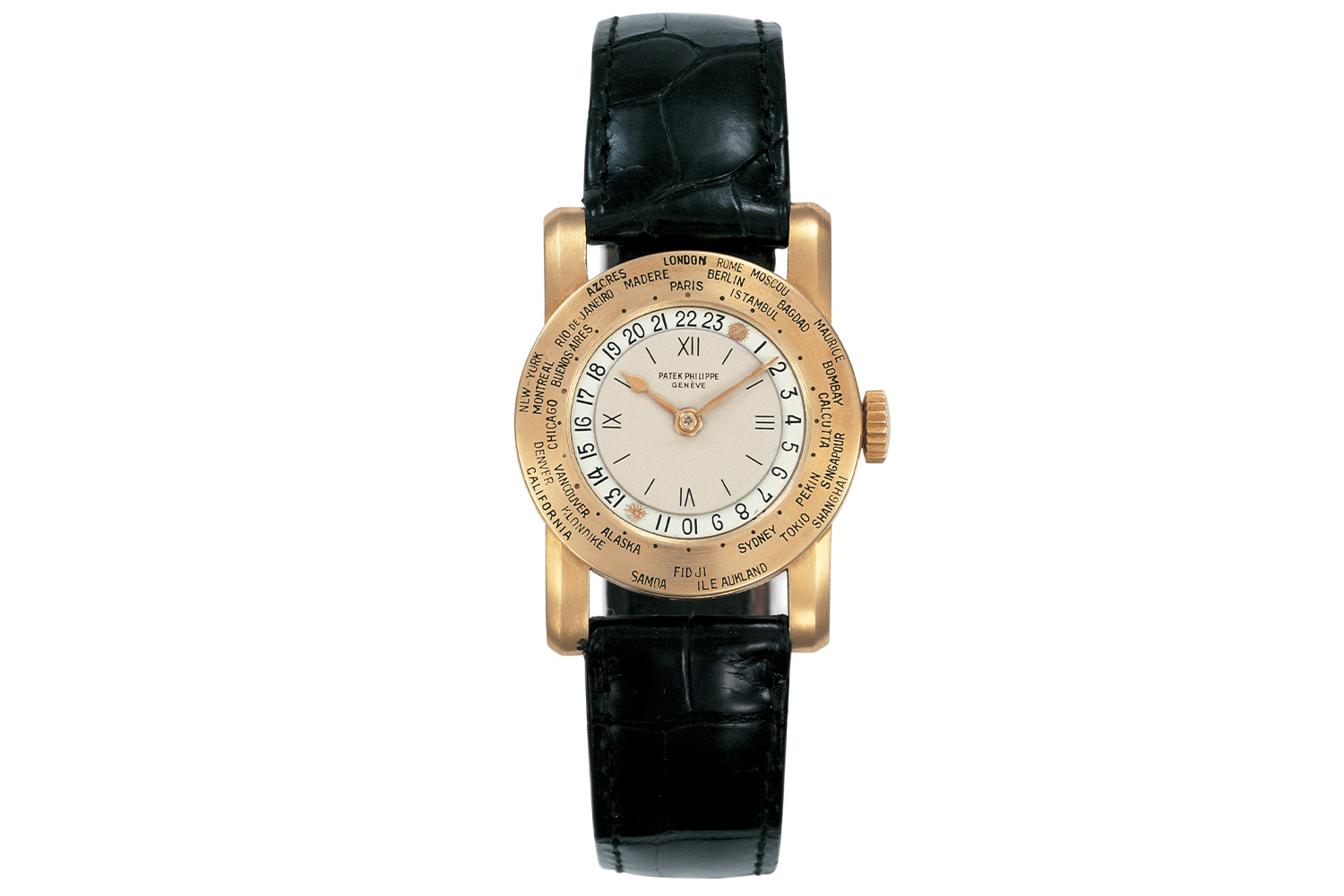
Patek Philippe Ref. 542 HU in pink gold
A Brief Look at Split-Second Chronographs
Now the problem is that the pressure of the arm against the heart cam can sometimes cause either a huge drag on the amplitude of the balance wheel, or it can cause the watch to stop altogether, especially when power reserve or mainspring torque is not high.
I cannot tell you how many super-high-end split-seconds chronographs I know of that are guilty of this flaw because they don’t have isolators, but let me just say there are a lot of them. So, of course, when Patek Philippe was going to add a split-seconds chronograph to the Ref. 5208 to create the Ref. 5308, they were going to do so accompanied by an isolator. Philip Barat says, “We didn’t want to increase the thickness of the movement, so we created an isolator mechanism that is on the same level as the split-seconds train, in between the split-seconds brake and the chronograph mechanism.”
But of course, typical of Patek Philippe, that’s not all. Indeed this laterally-coupled chronograph features a brilliant drive wheel made from nickel phosphorous using the LIGA process, which allows for the creation of extremely complex shapes down to a micron’s tolerance. A laterally-coupled chronograph means that the drive wheel and chrono wheel engage on the perimeter of both wheels using gear teeth.
The problem is that a lot of the time, as the clutch falls, the teeth hit each other rather than falling back into place in between each other. This causes backlash, meaning the seconds hand jumps either backwards or sometimes forwards, as the teeth struggle to find their place. Patek Philippe has solved this by creating a drive wheel where the teeth are flexible and each features its own leaf spring. As a result, the instantaneous perpetual calendar works perfectly with jumps of just 30 milliseconds even when the watch is down to just 10 hours of power reserve.
A Quick Refresher on Patek Philippe World Timers
Just nine years into their stewardship and in the throes of the Second World War, they launched two of the most important timepieces ever made — the Ref. 1518, the world’s first serially produced perpetual calendar chronograph, and the Ref. 1526, the world’s first serially produced perpetual calendar — and single-handedly introduced us to the era of complicated wristwatches.
In 1937, Charles’s son, Henri Stern, brought Patek Philippe to the United States. Henri was a global gadabout like no other, fearlessly venturing to South America and other far-flung destinations to spread the gospel of Patek Philippe, now under the leadership of his father and uncle. What was clear was that the Sterns discussed the type of wristwatches the modern gentleman and, in particular, the American would like to wear. Their answer was: a watch made for the traveling man, a man of elegance who circumnavigates the earth in style.
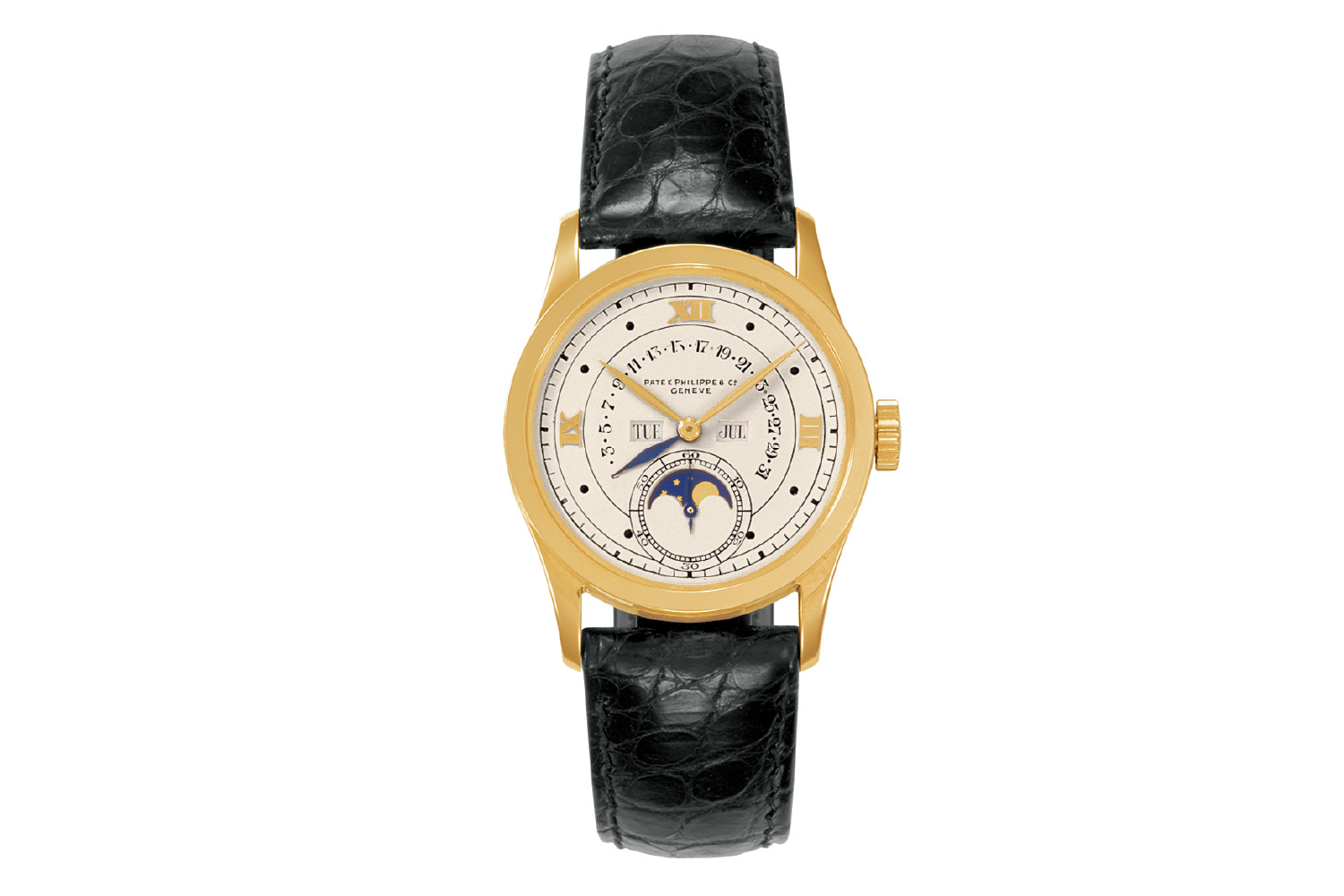
Patek Philippe Retrograde Perpetual Calendar Wristwatch from 1937
On display at the Patek Philippe Grand Exhibition in Tokyo, amid a magnificent array of both vintage and contemporary timepieces, was a gem known as the Patek Philippe Ref. 542 HU. The Ref. 542 HU is absolutely stunning to look at with its small 28mm case, Cottier’s hour hand with a bisected circle design, and unusually long lugs. Cased in yellow gold, it is also special in that it is the very first Patek Philippe World Time wristwatch where noon and midnight are shown using a sun and a moon in the 24-hour ring. The genius of the Ref. 542 HU relates to the use of a large rotating bezel that bears the names of 31 locations for the earth’s 24 zones, meaning that you can easily switch the name of your local city.
According to Sotheby’s, five examples are known to exist, two of which were on display at the Tokyo exhibition. But it was this pink gold example that literally made my jaw drop as I stared transfixed in front of it.

Patek Philippe Ref. 542 HU in pink gold
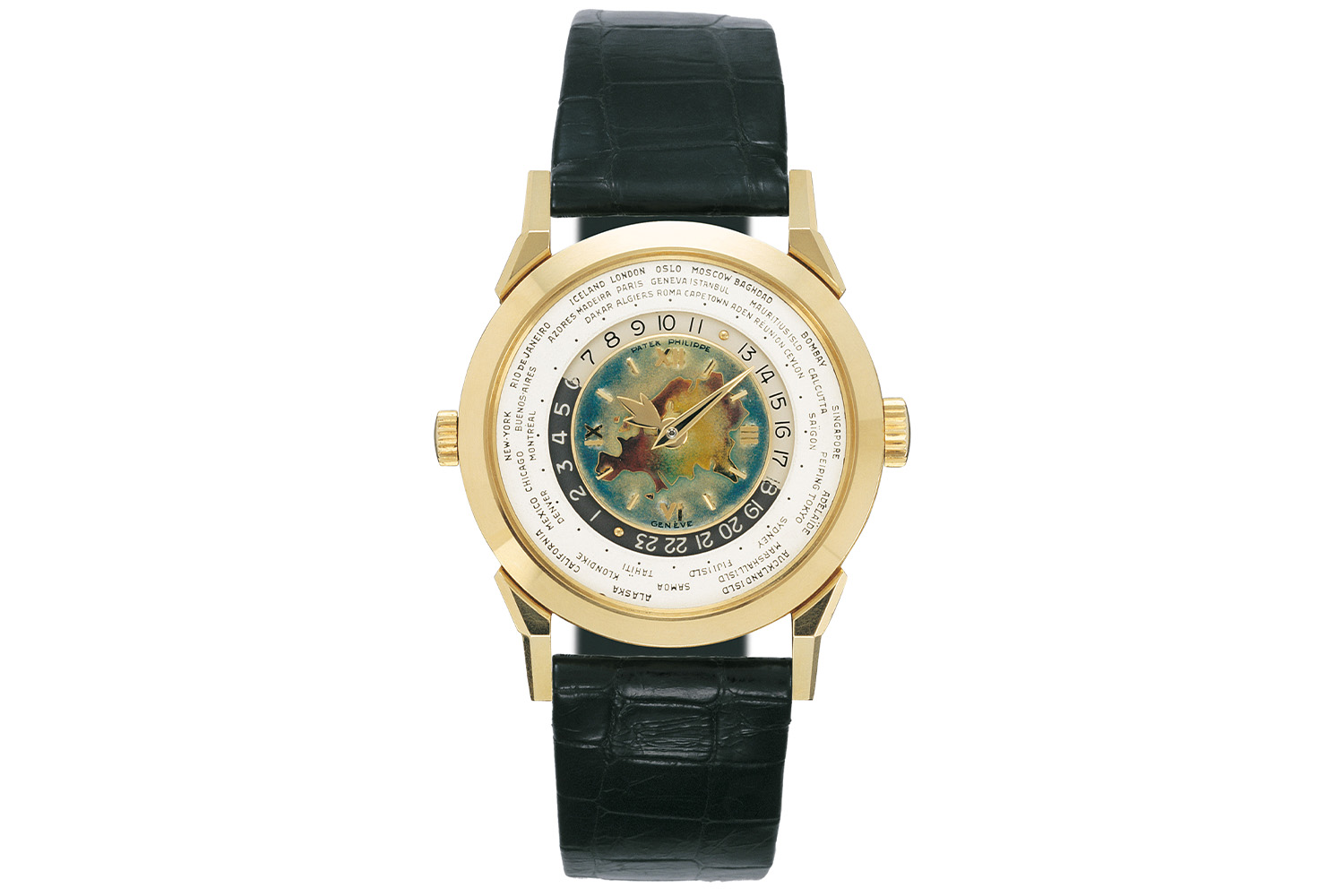
Patek Philippe Ref. 2523 World Timer
World Time Limited Edition Tokyo 2023 Reference 5330G-010
The Ref. 5330G is a magnificent white gold Patek Philippe world-timer with a purple guilloche à main dial and the date placed at the perimeter. “Thierry spent a lot of time deciding where to place the date,” says Philip Barat. “At one point he was thinking to place it between the city disc and the 24-hour ring, but decided it was not visible enough.” Finally the decision was taken to place it at the very edge of the dial — on the rehaut that marks the transition to the bezel.
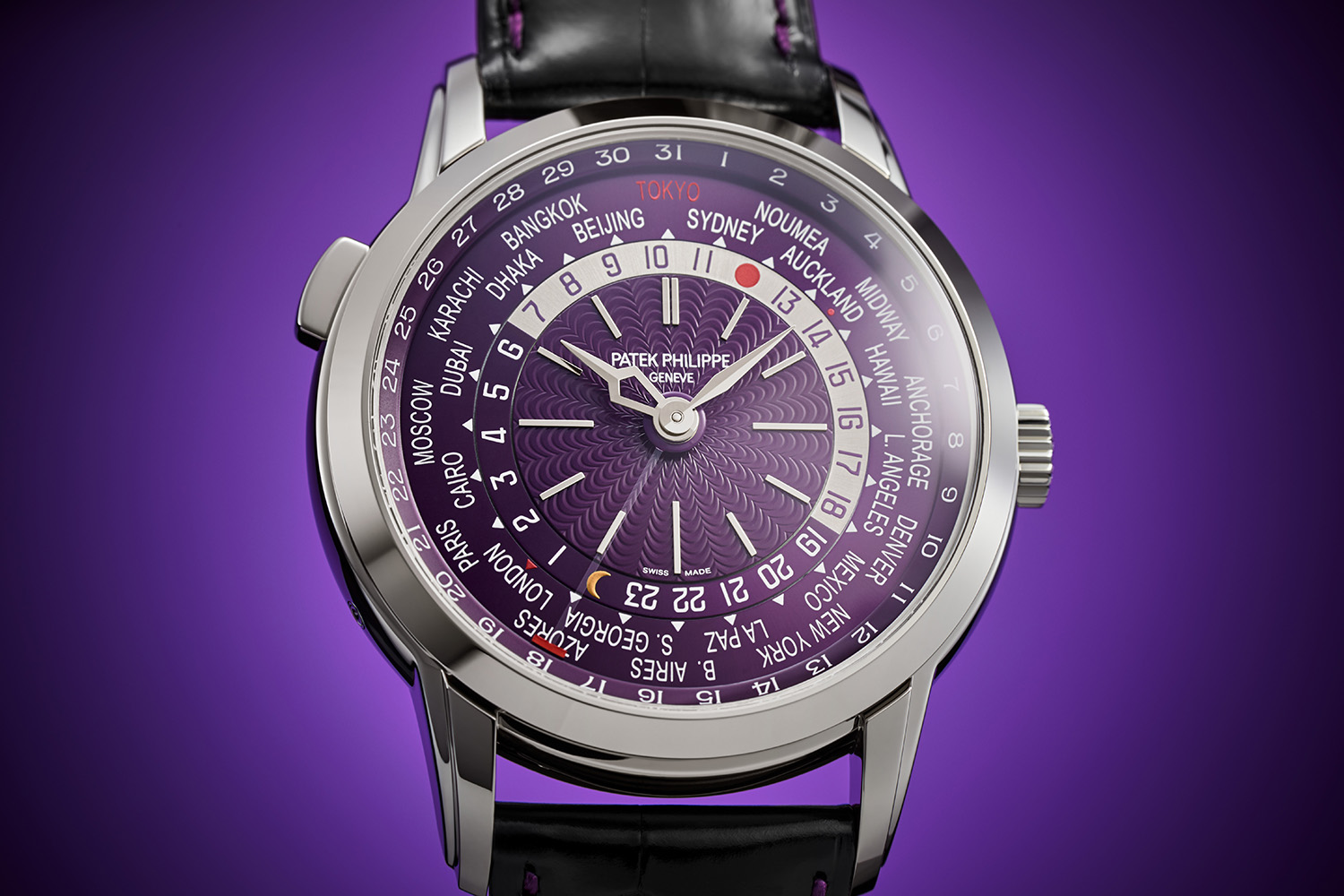
Patek Philippe World Time Ref. 5330G-010 Limited Edition Tokyo 2023
But that was far from the most complex technical feat required by the Ref. 5330G. Barat continues, “We realized we would have to deal with the International Date Line and that you could end up in a destination where the date was the day before when you travel east to west.” An example of this is a flight from Singapore to New York. In this scenario, you land the day before you departed. Amazingly, the Ref. 5330G understands this and compensates for it. But there is one more problem.
Barat says, “There is one hour a day where every one of the 24 zones is in the same date. So even when you cross the International Date Line, the date doesn’t change. We created a system with a differential mechanism to compensate for this. Actually, this is the second system we created, because in the first version we realized that the hand still wanted to change and you could see a sort of backwards and forwards tug of war on this hand during the one-hour period. Thierry immediately stopped production and had us rework the system to get it exactly right.”
This is a testament to how Patek Philippe never launches anything but a fully resolved timepiece. Ref. 5330G is exactly that and represents both transcendent beauty and, as always, real, functional innovation.
So now you understand the motivation behind Patek Philippe’s Grand Exhibition. As I pointed out earlier, this undertaking is both Herculean and extremely costly, but Patek Philippe clearly feels that it is worth everything — and I, for one, agree. It’s funny because, of late, it has been very fashionable to discuss the performance in terms of revenue of the world’s top watch brands. And many online pundits have discussed Patek Philippe’s ranking as the fifth biggest brand in the world at CHF 1.8 billion based on 68,000 units sold in 2022.
But, first of all, you need to understand something. Patek Philippe’s revenue is at the wholesale level. Patek Philippe — like Rolex, as opposed to Audemars Piguet and Richard Mille — believes in partnerships and always has. Could it shift to the model espoused by the latter to keep all revenue to itself and massively increase profit? Yes, easily. But Patek Philippe doesn’t because it is a family-owned company and thus makes decisions for the long term.
If you were to calculate Patek Philippe’s revenue at the retail level, it would probably exceed that of Cartier’s 2.75 billion — making it the number one high-luxury watch brand in the world. But Patek Philippe doesn’t need to, because it is already the number one watch brand in terms of desirability based on real authenticity and not marketing hype.
In many ways, even though they will never admit it, there is always a competition among the industry’s top CEOs to say that they make more revenue than the others. But Patek Philippe doesn’t think this way. Imagine if you were to go to a country where you don’t speak the language and perhaps the cultural differences there make you feel lost and confused.
Yet if you mention the name “Patek Philippe”, the vast majority of people around you, certainly in affluent circles, would immediately light up and want to talk to you. That is the power of Patek Philippe: it transcends language, culture, religion, and is the universal symbol for the very best when it comes to watchmaking. It has been for the last 100 years, and I am sure it will be so for the next 100.
So when people say, “Oh, but Patek Philippe doesn’t rank as high as this brand or that brand in terms of revenue,” tell them that it is because Patek Philippe is not playing this game. They are not motivated by revenue. They are motivated only by one thing: the preservation of their immortality as the very best.
I will say one last thing as a sort of warning to the rest of the industry. It is clear that with the completion of its new manufacture, Patek Philippe, which was previously restrained by the number of watches it could physically produce, is now capable of expansion. While the official statement is that this manufacture was created to “streamline production”, etc., the very brilliant Stern family is not going to invest CHF 600 million without a great reason.
With an already insurmountable delta between demand and supply, increasing production by, say, 30 percent, would do nothing to damage the desirability of Patek Philippe. It will, however, definitely take market share away from brands and groups that have profited all the times when a Patek Philippe was not available.




